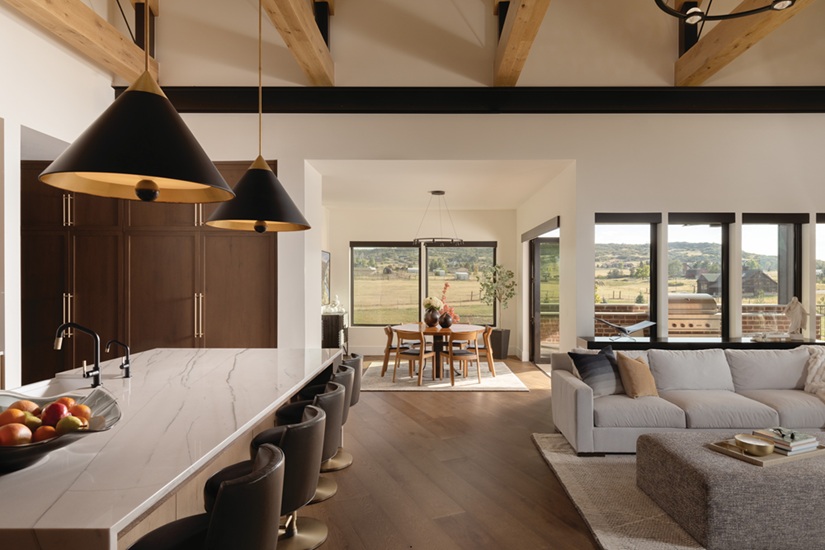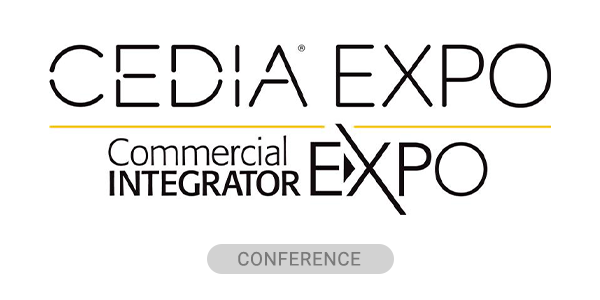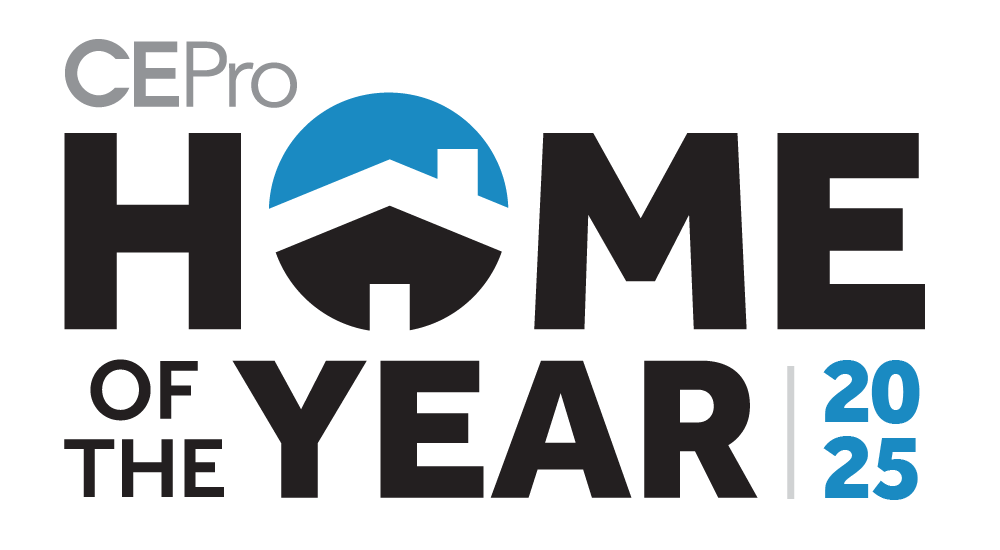In today’s luxury home automation market, technology and design are no longer competing priorities. They are converging to shape how people experience their spaces. At that intersection, integrators and interior designers are finding new ways to deliver beauty, comfort, and performance in harmony.
That trend is clear across nearly every Home of the Year Award entry. Integrators consistently cite the challenge of bringing sophisticated systems into architecturally compelling homes without disrupting the aesthetic. Increasingly, the products they deploy—framed displays, architectural speakers, linear lighting, shading and drapery—are part of the design language rather than obstacles to it.
Building the Foundation to Better Luxury Home Automation Design
Toni Sabatino, an interior designer with deep ties to the CEDIA community, says great interiors depend as much on usability as on visual appeal. In a high-end luxury home automation project, the user experience must be seamless for the design to really come together.
“Good interior design in this industry has to have a user experience to go with the aesthetic,” she says.
That’s why Sabatino’s strategy, and that of any good integrator, begins with understanding how the clients, move, gather, and relax in their homes.
“Understanding how people live in a space and creating designs that make them happy is key,” she says.
The awareness gap between designers and integrators can largely be solved by simply going to events like CEDIA Expo/CIX, where Sabatino goes to stay informed about what’s going on in luxury home automation and how tech can actually enhance the design of a space.
“CEDIA is very important to me as an interior designer because it allows me to know what’s possible and speak confidently to clients about better living, whether they’re remodeling or building new,” Sabatino says.
Where some integrators err, according to Sabatino, is first talking about technology rather than desired outcomes. An emphasis on security, comfort and entertainment should preface any conversation about technology.
“Then we can talk about the infrastructure that makes it all work,” Sabatino says.
The Designer–Integrator Dynamic
Even with growing collaboration, the misconception persists that interior design and technology integration operate at odds. That divide surfaced earlier this year in a Hollywood Reporter article claiming luxury smart homes often fall short.
The article referenced complexity and design issues cited by interior designers and real estate agents that work with ultra-wealthy clients. However, it did not include any insight from the integration community, which has spent years working toward simplicity and design-conscious solutions.
According to Sabatino, combatting that narrative requires integrators and designers to begin collaborating as early as possible.
“If we decide who’s responsible to whom and for what, we won’t be backtracking or having mistakes,” Sabatino says.
She points to a project where two on-wall speakers were installed asymmetrically on a wall the client intended for art. The fix—switching to invisible speakers and properly centering the artwork—illustrates how design and technology can coexist without compromise.
“Function and aesthetics both respected,” Sabatino asserts.
Where Technology Fits into the Conversation
On that topic of infrastructure, the conversation around technology has shifted beyond hiding hardware altogether. Instead, designers and integrators are choosing when technology should disappear and when it should serve as an intentional design element.
This shift is especially visible in categories like architectural audio. Caitlin Stewart, residential sales director for Leon Speakers, says expectations have matured.
“We believe that no one should have to sacrifice form for function, or aesthetics for performance,” Stewart says. “There is a way to tastefully blend both.”
Leon’s design philosophy stems from its artistic roots, shaped by founder Noah Kaplan’s background as a fine artist. Stewart says that identity continues to inform the company’s approach.
“We’re a design-first company, rooted in art, that engineers and crafts beautiful high-performance solutions,” Stewart says.
She notes that homeowners are gravitating toward clean, architectural products that blend into the environment. Yet, customization remains a crucial part of the design brief.
“Designers and clients want choices—colors, materials, and finishes that bring character. Giving them fixture-level control over AV elements lets technology feel curated, not imposed.”
Where Displays Meet Design: A Case Study
Framed displays fit into the same movement toward design intent. Samsung’s work on The Frame and The Frame Pro reflects this shift, and may be considered as a foundation of the movement in design-forward tech.
Lydia Cho, Head of Product for Home Entertainment at Samsung Electronics America, says the original concept when The Frame was first launched nearly 10 years ago was to create a TV that would integrate naturally into design-led spaces.
“Our vision for The Frame was a TV that could elegantly blend with any space and elevate any aesthetic.”
As more homeowners began using The Frame as their primary television, Samsung updated the design and performance accordingly by releasing the The Frame Pro with a Neo QLED 4K display and other upgrades this year.
Cho says the product’s evolution is rooted in feedback from designers and integrators, especially around mounting, bezels, cable management, and reducing visual clutter. She adds that reflections, glare, and texture were consistent areas of feedback. The matte display and anti-reflection treatments help address those concerns and allow the screen to better support the room’s ambience.
However, it’s not just The Frame line of TVs that can be turned into fine art with the click of a button, as the company has expanded its Art Store across its premium TV lineup.
For designers, Cho says the goal is to provide flexibility—more sizes, more design options, and more ways to integrate screens without compromising style.
“We think of your TV as so much more than just a black box on your wall,” Cho says.
Speaking the Same Language
Despite the clear movement among manufacturers to produce more design-forward technology, integrators are still held to lofty, luxury standards when installing home automation systems. Sabatino says successful projects require designers and integrators to present a unified, solution-oriented approach.
“The first key is managing expectations—from both the design and integration sides, and with the client,” Sabatino says. “Find a common way to work together and be solutions-oriented.”
The best outcomes, she says, come when integrators respect the designer’s expertise, and vice versa.
“I’m not the tech designer,” Sabatino admits. “I’m the interiors person.”
From the manufacturer perspective, Stewart says collaboration has become a priority. Leon is increasingly working with architects, designers, and integrators to create products that reflect shared priorities.
“We strive to always lead by design, and we can only continue to build on that by partnering with influential and inspirational designers and architects.”
Cho echoes that sentiment, noting that the design community directly influences Samsung’s product development.
The Future of Luxury Home Automation: Simple, Personalized and Reliable
The design and integration communities appear aligned on a vision for luxury home automation systems that are simple to use, deeply personal and aesthetically thoughtful. That includes flexible materials, colors, finishes, and installation options, along with systems that are easy for homeowners to operate.
Sabatino says concerns about rapid obsolescence have eased as technologies like streaming media players become popular and more advanced than previous versions, essentially future-proofing investments in home technology.
“Streaming has taken away a major factor—people aren’t as worried that what they buy will become obsolete overnight.”
Technologies like streaming have become popular because they feature intuitive user interfaces and prioritize the user experience, which Sabatino says is absolutely the top priority when putting any technology into a home.
“If the system can bring simplicity and ease of use, people love it,” Sabatino says.







